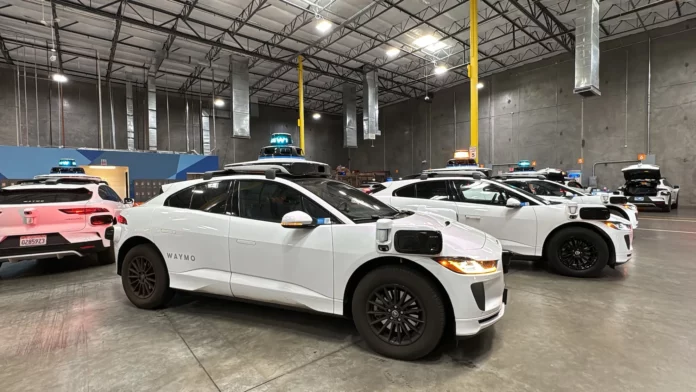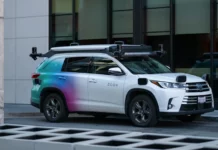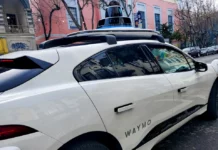Waymo said Wednesday that it has applied for a permit to test its autonomous vehicles in New York City, the Alphabet company’s first step in a complex regulatory process to bring its robotic taxis to the largest US city.
Waymo has applied to the New York City Department of Transportation for a permit to operate its Jaguar I-Pace self-driving cars with a human operator behind the wheel in Manhattan. A permit to demonstrate or test autonomous vehicles in New York requires a human driver behind the wheel, a $5 million insurance policy, and proper training for each test vehicle operator on how to operate the test vehicle safely.
New York law is particularly strict in prohibiting the use of autonomous vehicles. While obtaining a permit would be a significant achievement, Waymo is still a long way from starting commercial operations in the city – or even testing without a human operator behind the wheel.
Nevertheless, Waymo is not resting on its laurels and says it is advocating for changes in state law that would allow for self-driving vehicles. The company is also trying to build trust in New York City and the state by partnering with several organizations such as MADD NY, YAI, the National Federation of the Blind, and Bronx Community College.
Waymo told TechCrunch that it has had positive conversations with lawmakers this year and hopes to make further progress on regulatory changes. New York state law states that any person operating a motor vehicle must keep at least one hand (or prosthetic) on the steering wheel at all times. Changing this wording will be key to Waymo eventually being able to deploy self-driving vehicles.
Other companies have tried to test in New York before, including Mobileye and the now-closed Cruise. But these efforts never went beyond a few demonstrations or pilot projects.
Of course, there are other problems in New York besides regulatory ones. The city is crowded with cars, trucks, delivery vans, bicycles, buses, and, most importantly, people running around. San Francisco, one of the markets in which Waymo currently operates, is also a busy city with many of the same challenges. In New York, this complexity is magnified by a factor of 10.
Waymo has been eyeing the huge New York City market for years. In 2021, the company deployed its now-discontinued Chrysler Pacifica minivans-the first self-driving vehicles in its test fleet-to manually drive and map Manhattan. The company said at the time that each vehicle would be manned by two people, one behind the wheel and one in the passenger seat, to help guide the driver’s actions, monitor the vehicle’s software in real time, evaluate performance, and enter comments in a log.
These vehicles have never been operated in autonomous mode, although they were all equipped with the fifth-generation Waymo Driver, which at the time was the most modern and advanced self-driving system.
Over the past four years, Waymo has scaled to many other locations. The company provides more than 250,000 fully autonomous paid rides each week in several US markets, including Austin, Los Angeles, Phoenix, and San Francisco.









